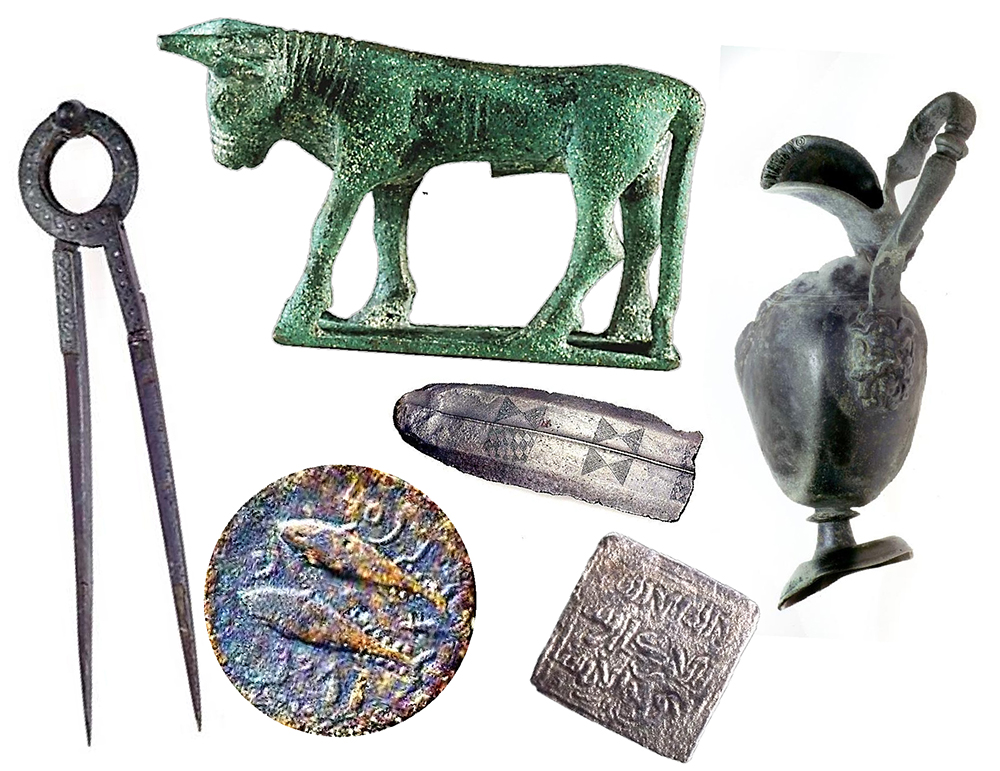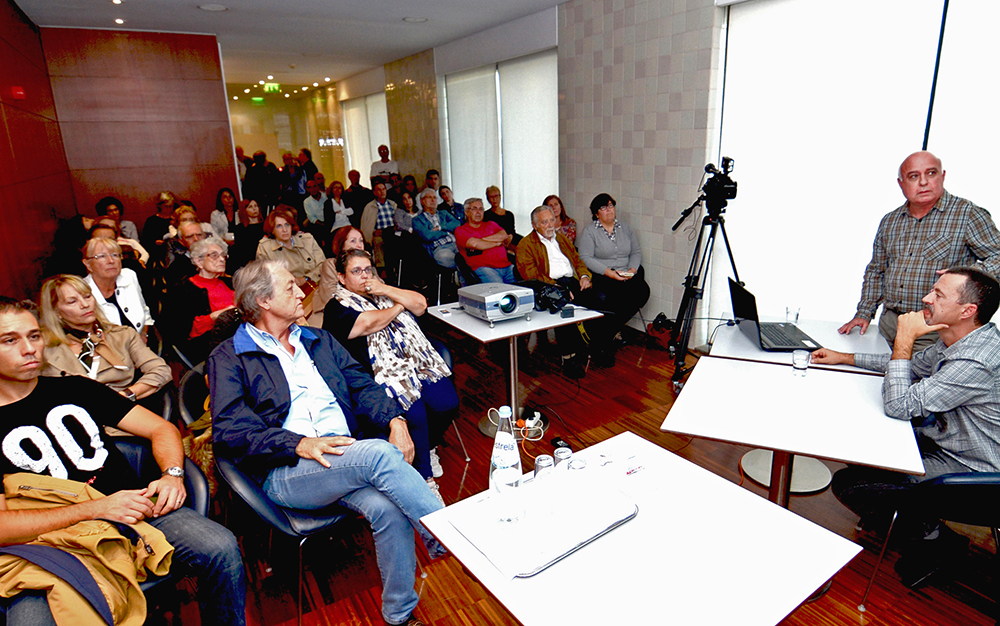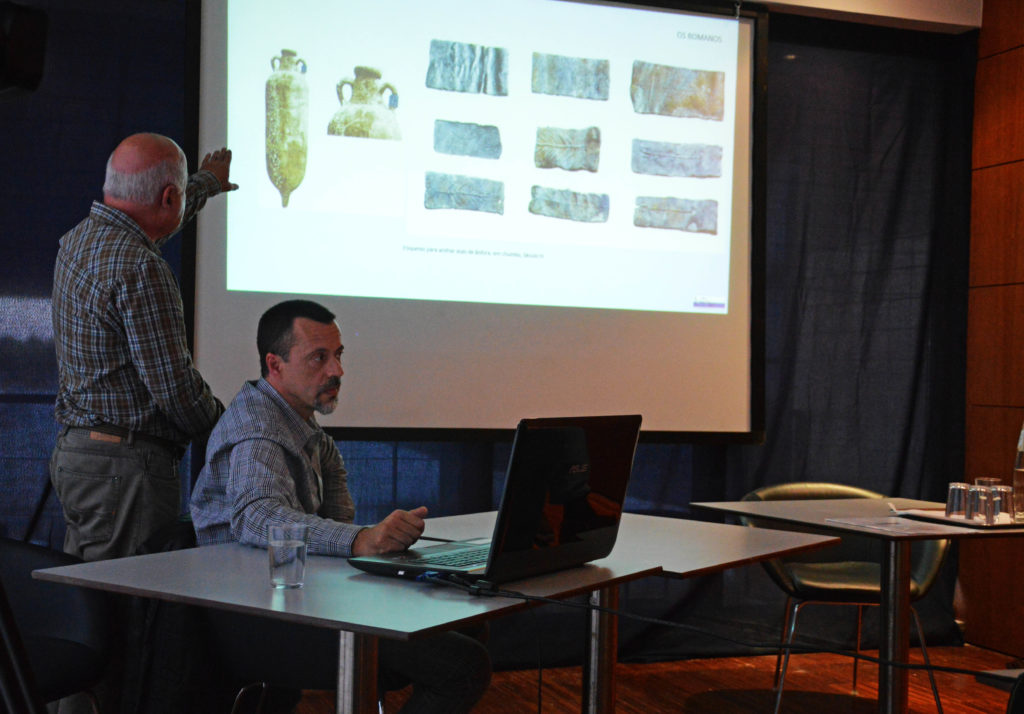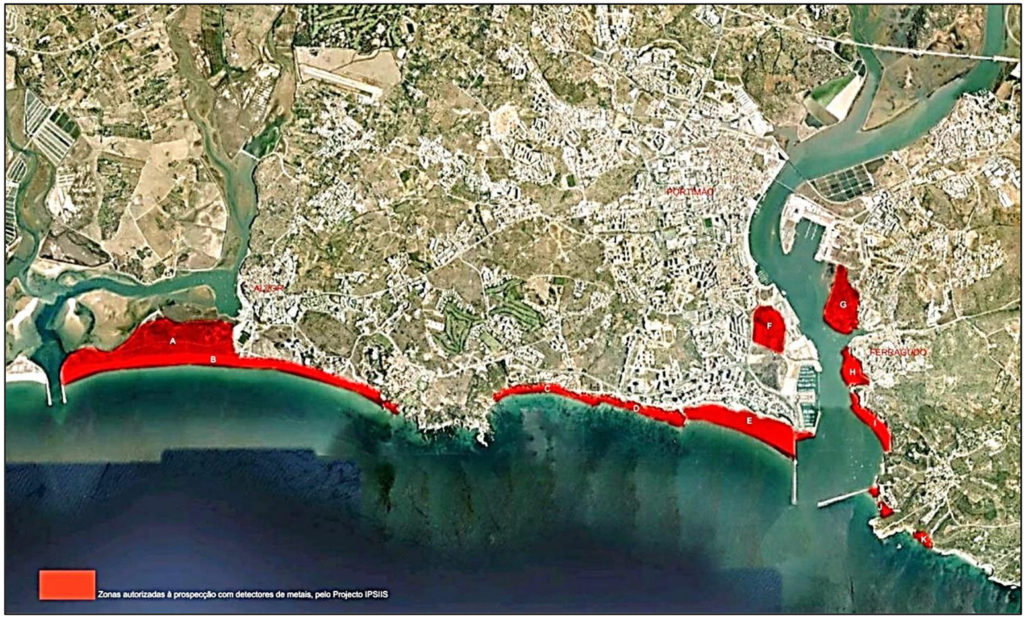 José de Sousa and Paulo Viegas, two of the founders of the IPSIIS Project, were the guests of another gathering promoted by the Group of Friends of the Museum of Portimão, with the theme of the discoveries made, in their prospecting activity at the sites of discharge of the sands from of the old dredging in the Arade estuary and in the Ria de Alvor.
José de Sousa and Paulo Viegas, two of the founders of the IPSIIS Project, were the guests of another gathering promoted by the Group of Friends of the Museum of Portimão, with the theme of the discoveries made, in their prospecting activity at the sites of discharge of the sands from of the old dredging in the Arade estuary and in the Ria de Alvor.
The IPSIIS, created in 2001, under the now extinct CNANS (National Center for Nautical and Underwater Archeology), and which in 2014 was constituted as an association, coming under the direct supervision of the Museum of Portimão, is “an exception at the national level”. Its 18 members are authorized, equipped with metal detectors, to “prospect only in the dredged deposit areas, namely the beaches”, located around the Arade estuary and in the Ria de Alvor (see image in the photo gallery).
Unlike other illegal prospectors, members of this group have a special authorization to do their work, but they also have obligations – such as, within a maximum period of 48 hours, to declare the pieces found and deliver them to the Museum of Portimão. The heritage that is found in the dredged sands and deposited on the beaches of the municipalities of Portimão and Lagoa belongs to the State, that is, it belongs to all of us, and no prospect can do business with what he finds.
José de Sousa, president of the IPSIIS Project Association, points out that, over the years, hundreds of objects have been found, «from the Chalcolithic to our times». "The Roman period is, of all, the best represented," he added.

Coins, everyday objects such as buckles, fibulae and rings, pieces of candelabra, gomis (a kind of jar for liquids in metal), calipers, an ingot in bronze and another in silver, Roman probes and rare lead labels placed on the wings of amphorae, or even objects with a religious function, such as the «Taurus» (bull), an ex-voto of the Iberian Culture, in bronze, from the II Iron Age (XNUMXth – XNUMXth centuries BC), all of this has been found , classified and delivered by this group of prospects.
In addition to the many pieces that are on display at the Portimão Museum, there are hundreds of others that are in the reserves, waiting to see the light of day. The work, framed by a protocol with that Museum, is carried out in close coordination with the Directorate-General for Cultural Heritage (DGPC) and the Regional Directorate of Culture of the Algarve.
José de Sousa, who was the discoverer of the Bull with more than 2500 years that today is one of the pieces Estrela from the Museum of Portimão, he has, however, a regret: that Portuguese researchers, from universities, are not interested in the pieces that this group of prospectors has rescued from the sands of the beaches…and from the claws of people far less concerned with heritage.
And he even recounted a past case with the Portuguese State itself: «a few years ago, the State announced the purchase, at an international auction, of a card from the Discoveries period, to be shown at Expo98. But we alone have recovered five of those bars, the discovery of which was duly communicated to CNANS. However, no one thought to talk to us and come here to get them».
And today, are pieces still found on the beaches? Paulo Veigas says yes, especially after the storms. “Storms help, as the chances of finding parts increase”, due to the agitation that takes place in the sands and on the coast. One of the last ones, the famous Hercules storm that, almost three years ago, sowed so much damage along the Portuguese coast, gave a good help to the members of the IPSIIS.
Now, with its work being supervised by the archaeologists of the Portimão Museum, following a protocol established in 2011, the IPSIIS will soon "collaborate with the dredging that will be carried out in the Ria de Alvor", revealed, at the gathering, the archaeologist Isabel Soares, Head of Division and Director of the Museum.
At the end of this get-together “Conversas with Portimão in the background”, which had a full house, with many people having to stand up, there was a tasting of the flavors of Autumn and of a São Martinho already so close, with the gastronomic proposals of the Executive Emídio Freire, from the «Faina» restaurant at the Portimão Museum. It was a tasty way to end a get-together that came late into the night.





















Comments